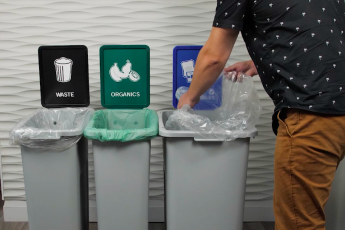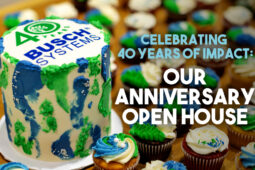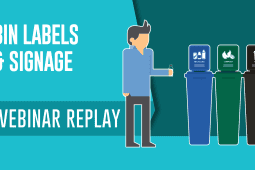9 Key Secrets to Starting a Recycling Program For Sports Stadiums
For more information on how to build an exceptional recycling program for your stadium, click here.
We’ve been building exceptional sports venue recycling & waste management programs for over 35 years. Here’s 9 key secrets we’ve unearthed that’ll build the zero waste program you’ve always wanted for your stadium and save you money in the process.
Let’s start with the facts.
Sports facilities are massive producers of waste, most of which is easily recycled with the correct program in place. By running a game day recycling program, you can help ensure that the amount of trash that ends up in landfills is reduced, and that recyclable items are turned into new products:
- Waste Management (WM) estimates that the four major professional leagues (NFL, MLB, NBA, NHL) generate approximately 35,000 metric tons of carbon dioxide (CO2) each year from their fans’ waste activities alone.
- The Beijing Olympics alone were expected to produce 14,000 tons of trash during sporting events.
- University of Tennessee reported generating 15 tons of waste for each college football game, and Ohio State reported generating close to 23 tons of waste for a single college football game.
- In a study conducted by the Journal of Athletic Training, 59% of those surveyed, believed that the practice of athletic training produced substantial waste. However, only 38% felt sufficiently educated in methods of sustainability to change their practice.
In the era of the Green Economy, it’s essential for every stadium to have an effective recycling program in place. An effective program focuses on reducing waste, reusing useful materials and recycling them. Ineffective sports venue programs tend to generate a lot of waste, require regular maintenance and expensive waste disposal. Bearing these things in mind, let’s take a look at 9 key ways to enhance the effectiveness of your sports facility waste management program.
- Always begin with a preliminary waste audit to categorize and quantify your campus waste
Step one of building a successful waste management program for any industry begins with identifying and categorizing the types and quantity of waste produced by every segment of your facility grounds. Use a map of your grounds to identify key areas (i.e parking lots, training facilities, bleachers, private suites, etc.) and begin to identify what types of waste is being generated in each area.
The focal areas for increasing recycling initiatives at sports venues should include concessionaires, parking lots and tailgating, post-event stadium bleachers, hallways, restrooms, and other public areas. These areas are where you’ll find a significant portion of the waste generation at your facility.
- Build a Green Team
How much time does your venue facilities management team have to spare for sustainability initiatives?
If the answer is less than you would like, a green team can be the most valuable ally in your quest for building an effective recycling program.
A Green Team can be a small group of employees or community volunteers whose combined goal is to educate, empower and inspire fellow staff and fans to establish and promote environmentally sustainable practices within their organization. Every new initiative needs a full launch campaign and a group of influencers that will help build the momentum of your program. Without a green team, it will be very difficult to get your new waste management program off the ground.
To setup your green champions for long term success, make sure this group has formal oversight, tools for measurement and verification, and a clear mission.
- Communicating your program to your fans is essential
Make sure fans know about your recycling initiatives. The massive benefit sports venues have over other facilities is the amount of control they have over the materials entering and leaving the facility. This makes standardization of your waste program much simpler.
Create easy-to-understand signs for your recycling & waste stations. Including pictures on signs of what items belong in each bin (or even attaching the actual items to signs) is a great way to clarify what’s recyclable, compostable, or destined for landfill in your facility. PSAs or other in-game announcements about recycling, posters, contests, and blurbs in programs can all help involve fans and make sure they’re disposing of materials correctly. Reach out to fans during tailgaters and other events with special recycling collection (volunteers can help here). Consider including fan education about your initiative on your website and in social media.
- Modify your operational habits
The daily operation of your stadium (either on game-day or otherwise) provides you with an excellent testing ground for some of the waste management techniques.
Reducing the amount of waste begins with modifying little things. Here’s some examples to get your creative juices flowing:
- Use biodegradable, compostable food containers for serving in the concession areas. The plastic bowls, plates and utensils that are used contain less plastic by volume, which also reduces waste.
- In parking areas, tailgates produce huge amounts of waste, much of which is bottles and cans. Collection bags and bins in these areas can significantly cut down on this type of waste
- Instead of selling bottled water, install water fountains throughout your facility and partner with your sponsors to promote reusable cups, mugs, etc.
- Use high-traffic areas to promote your recycling goals by adding large, attractive recycling stations with signage to promote your messaging
- Avoid paper products other than toilet paper in the bathrooms.
- Using LED bulbs instead of regular ones automatically means fewer replacements since LED bulbs last up to 10 times longer.
- Work with staff and vendors to keep disposable packages and other potential waste materials out of your venue to begin with Substitute reusables for disposables, at concessions or behind the scenes; encourage refilling of water bottles; switch to reusable transport packaging, and so on.
- Get creative with those more unique items at your facility
Many facilities or events have specific items which are challenging to recycle. For example, at the US Open, USTA hoped to recycle tennis ball cans, which are made from three different types of plastic and include a metal rim. With the help of NRDC, USTA found a recycler willing to cut the rims off and process the cans so they could be recycled. Find out what item doesn’t work in your usual recycling, reduction, reuse, or composting, and work with vendors, haulers, consultants, and other teams/venues to come up with a creative way to keep the product out of the landfill. Sometimes this means working with purchasers to see if there is a different way the item can be purchased (different packaging, buying in bulk, etc.).
- Tackle single-use plastics and organics
Hard Rock Stadium in Miami (one of our clients!) will proudly phase out 99.4% of single-use plastics by 2020, including for Super Bowl LIV. The proactive measures taken by the Dolphins and Hard Rock Stadium will eliminate more than 2.8 million plastic items annually including cups, bottles, cutlery, stirrers and spoons as well as all plastic disposable packaging accompanying these items. Tom Garfinkel, vice chairman, president and CEO of the Miami Dolphins and Hard Rock Stadium, said the venue utilizes approximately 678,000 plastic bottles and 525,000 plastic cups each year.
Composting isn’t available in every community, but work with your haulers (or seek additional help) to get organic discards collected for composting, including landscaping and food waste. Another option is to purchase compostable food serviceware. Buying biobased, compostable serviceware (made from plant-based plastics, ideally waste-based, and certified compostable by ASTM) means that your food service items can be composted instead of trashed, if composting is available in your facility, and helps move the serviceware market away from reliance on non-renewable materials like fossil fuel-derived plastic.
- Re-evaluate Disposal Habits
Not long ago, waste removal was mostly built around collecting co-mingled materials and sending the waste to landfills, where it was incinerated or compacted by waste disposal companies. These days, however, your green team and facility management staff can take an active role in managing part of the process.
Food waste is one of the largest waste streams on a sports venue grounds and fortunately there’s a new crop of haulers that focus solely on organics/compost collection that will gladly collect your food waste, often at reduced costs. And if that’s not an option, you can always invest in food composters to reduce the binned waste generated by food leftovers on game day.
- Choose the right recycling stations and place them appropriately
There’s a hodgepodge of factors you need to consider when purchasing containers to suit each space around your sports venue—too many to cover in this blog! However, as a start, if you want your stadium recycling & waste program to be successful, it’s imperative that you choose containers that keep all of the collection streams together, regardless of their location across your facility grounds.
For example, if there isn’t a recycling or compost stream directly next to the trash stream, fans just end up tossing all their waste in the most convenient bin—the closest one. This leads to enormous amounts of contamination, which can derail your sustainability goals due to your recycling and compost often ending up in the landfill rather than being properly sorted at your community’s Material Recovery Facilities (MRF).
Quickly, some other things to consider when choose the right recycling & waste station are:
- Placement
- Climate
- Capacity
- Restrictive Openings
- Signage & Label Customization Capabilities
Make sure you’ve located well-marked, easy to use recycling containers throughout your venue – and make sure every time there’s a waste bin, there’s a recycling bin next to it. Some venues have taken this strategy even farther by creating zero waste stations with fewer waste receptacles, instead offering more containers for recycling (and compost) collection. Place bins wherever you think people are likely to need them – near concessions stands, near exits, etc. – and, optimally, place stations so that at least one is always in view (e.g., every 25 feet).
- Set sustainability standards for your stadium vendors & involve sponsors
You should have complete control of the high-quantity materials entering your facilities (i.e single-use plastic cups, trays and other food packaging). Communicating standards to your vendors and choosing more sustainable alternatives will have a large impact on the quantity of waste and therefore your disposal costs. Environmental purchasing is a key part of a responsible waste system. In addition to working with vendors to make sure the packaging and serviceware they use is recyclable or compostable in your area, work with your purchasing team to buy paper and other products with recycled content. Buying recycled content paper and other products means you are closing the recycling loop, and helping to ensure that there are markets for the recyclable materials that are recovered.
Many sponsors want to help expand recycling in exchange for brand enhancement. This can be a particularly good fit with sponsors who are also vendors, e.g. beverage providers. Partnering with sponsors on greening in turn helps build a team’s green brand, which enhances team branding.
Start your stadium waste management program off on the right foot by taking advantage of these 9 industry secrets! Once you’ve launched your sports venue waste management program, you’ll start to see many more areas for improvement. These minor or major improvements will continue to increase your diversion rate and positive impact on the environment, reduce your costs and ultimately enhance brand loyalty with your fans.
To finish here’s a couple of bonus secrets! Sports venues around the globe are getting creative in the ways they’re able to reduce costs while becoming more environmentally-friendly. Take a look:
- The Seattle Mariners recycle food waste, paper, cardboard, glass, metal and plastic, which keeps 226 tons of waste out of the landfill and saves $26,000 in disposal costs.
- The book store at the State University of New York at New Paltz no longer offers plastic shopping bags. Instead, students may purchase a canvas bag for $1.00; the bags can be reused, exchanged or redeemed at any time for the same price. The book store reportedly has eliminated the need for 50,000 plastic bags each year.
- University of Tennessee’s Neyland Stadium has a program in place that recycles plastic cups, water bottles, and cardboard inside the stadium. Tailgating areas recycle plastic bottles, aluminum cans, and newspapers. The stadium is currently able to recycle 15 percent of the 15 tons of waste it generates per game. The recycling program saves University of Tennessee about $3,500 in trash hauling costs per season.
- The Oakland-Alameda County Coliseum faced challenges in its recycling initiatives. There was a high cost of hand-sorting recyclables from the garbage, contamination in cardboard recycling, high turnover in cleanup crews, tight event schedules, and lots of food packaging waste. The stadium switched to cornstarch-based compostable cups and expanded recycling collection to include food waste. The stadium also put a lot of effort into training the cleanup crews. Post game, the crews hand-sort everything and divide recyclables into bottles and cans, compostables, and garbage. This has eliminated 200 tons of organics, and 400 tons of total recyclables from entering landfills. This saves the stadium $40,000 a year in disposal costs.
Need help getting started? Contact us to chat with our Sports Stadium Waste Management Specialists for more direction on where to begin your journey to waste management greatness.








